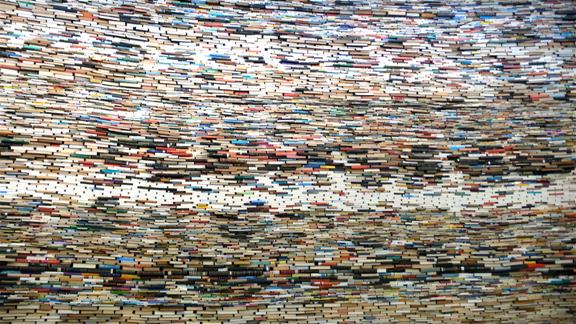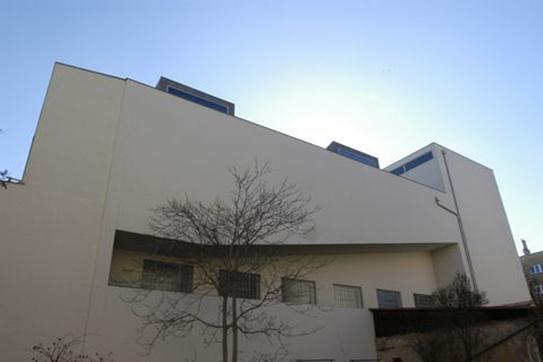“ARTMargins” Talks to Jaroslav Anděl, Artistic Director of DOX Center, Prague
Jaroslav And?l has produced numerous exhibitions and publications on modern and contemporary art both in the Czech Republic and abroad. He is the co-author of Czech Modernism 1900-1945 (Museum of Fine Arts Houston, Houston, Texas, U.S.A. 1990) and co-editor of Cinema All the Time: An Anthology of Czech Film Theory and Criticism, 1908-1939 (Czech National Film Archive: 2008). He was recently appointed artistic director of the newly opened DOX Center for Contemporary Art in Prague.
Erich Sargeant: You have been open a few months now, are you happy with how things are going, the initial reception to the gallery and the number of visitors you are getting – particularly as our understanding is that DOX receives no government money?
Jaroslav And?l: We have been quite happy with the reception, although we hope that attendance will grow as people will get more used to going to this part of Holešovice. I believe there is a huge potential in two segments, young people and tourists. We are now developing programs and collaborations with high schools, colleges and universities and hope that these partnerships will create a new community around DOX.
E.S.: Can you tell us a little about the area where DOX is located, how Leoš Válka became involved in the building and the history of the building itself before becoming a gallery.
 J.A.: Leoš is a small developer who renovates or reconstructs individual buildings for high quality living while having a long-term interest in contemporary art, design and architecture. Several years ago he was able to buy one building which used to be a former sheet metal factory and realized its great potential to serve as a gallery of contemporary art. He asked Ivan Kroupa, a respected Czech architect, to design a space for contemporary art. A couple of years later, another building of that complex became available, followed a little later by the last remaining structure that belonged to the factory. Kroupa then had to come up with a completely new project while Leoš found a couple of partners to finance it.
J.A.: Leoš is a small developer who renovates or reconstructs individual buildings for high quality living while having a long-term interest in contemporary art, design and architecture. Several years ago he was able to buy one building which used to be a former sheet metal factory and realized its great potential to serve as a gallery of contemporary art. He asked Ivan Kroupa, a respected Czech architect, to design a space for contemporary art. A couple of years later, another building of that complex became available, followed a little later by the last remaining structure that belonged to the factory. Kroupa then had to come up with a completely new project while Leoš found a couple of partners to finance it.
E.S.: Is DOX just a temporary exhibition space or do you plan to acquire a DOX permanent collection? Will the very impressive wall of books remain as an architectural feature of the building?
 J.A.: DOX is a Kunsthalle type of institution, a gallery for temporary exhibitions. For that reason Matej Krén’s monumental installation cannot stay. It would certainly deserve a permanent home.
J.A.: DOX is a Kunsthalle type of institution, a gallery for temporary exhibitions. For that reason Matej Krén’s monumental installation cannot stay. It would certainly deserve a permanent home.
E.S.: DOX has presented Ji?í H?la’s Archive of Fine Arts (Archív výtvarného um?ní, o.s.), a collection of documents relating to Czech and Slovak art, can you tell us what your ambitions are for this collection?
J.A.: We wish we were able to keep it at DOX on a long-term basis, but at the moment we are not able to for financial reasons. We hope that the city and/or the state will realize how important this archive is and will support its existence.
 E.S.: Is the aim to provide a space for Czech and/or other central/eastern European artists to exhibit their work, or are you planning on bringing in work mainly from other countries? The opening show was by a Spanish artist – are we to draw any conclusions from this?
E.S.: Is the aim to provide a space for Czech and/or other central/eastern European artists to exhibit their work, or are you planning on bringing in work mainly from other countries? The opening show was by a Spanish artist – are we to draw any conclusions from this?
J.A.: DOX’s mission is to provide a platform for exchanges between local and international art scenes. Hence we’ll present both local and international artists. That was also the case with the inaugural exhibitions of which Jose-Maria Cano was a part.
E.S.: Do you see DOX as part of an international “circuit” of modern art spaces?
J.A.: The answer is “Yes,” but I should note that our aspiration is to initiate exchanges and dialogues and pay special attention to local and regional contexts.
E.S.: Are you hoping to attract an international audience or do you see citizens of Prague and the Czechs as your primary audience?
J.A.: It is not either/or, but both. This comes naturally to younger people who travel or even live in different places and countries.
E.S.: Do you have priorities that you can share with us for future exhibitions?
 J.A.: We plan to introduce important international artists whose work might have special relevance in the local context. For instance, this summer we’ll have a large exhibition of Douglas Gordon. We have worked with Pipilotti Rist on a special project conceived as an homage to V?ra Chytilová, a leading filmmaker of the Czech New Wave. We also plan to take advantage of the specific spatial qualities of our gallery spaces, such as the DOX Tower top gallery, for special projects by international artists. Young artists will exhibit their work in the Project Room.
J.A.: We plan to introduce important international artists whose work might have special relevance in the local context. For instance, this summer we’ll have a large exhibition of Douglas Gordon. We have worked with Pipilotti Rist on a special project conceived as an homage to V?ra Chytilová, a leading filmmaker of the Czech New Wave. We also plan to take advantage of the specific spatial qualities of our gallery spaces, such as the DOX Tower top gallery, for special projects by international artists. Young artists will exhibit their work in the Project Room.
E.S.: How far ahead are you planning?
J.A.: We have to plan at least a couple of years ahead while being flexible enough to respond much more quickly if there is an opportunity to present exciting projects.
E.S.: Can you tell us a little about the Monday evening talks and events and what other kind of events (music, film, video) you are planning?
J.A.: We are now trying to have these events twice a week. Besides talks and events related to current exhibitions, we also organize presentations and panel discussions on science and art, and on topical issues related to public space. We are looking for financial support to enable us to have international speakers.
E.S.: How much, if any, Czech art history is on your agenda – or are you purely interested in contemporary art?
J.A.: We are focused on contemporary art, which doesn’t mean that from time to time we will not present artists and works from earlier periods.
E.S.: Do you plan to exhibit any Czech design?
 J.A.: We often say that DOX is a center for contemporary art, design and architecture. We plan not only exhibitions on design (both Czech and international), but also on architecture, photography, and new media.
J.A.: We often say that DOX is a center for contemporary art, design and architecture. We plan not only exhibitions on design (both Czech and international), but also on architecture, photography, and new media.
E.S.: When do you expect the remaining part of the gallery to open and what will it consist of?
J.A.: It is a financial issue. We want to open another floor or floors of the annex building later this year.
Prague, 15 March 2009





